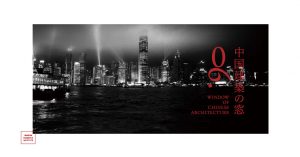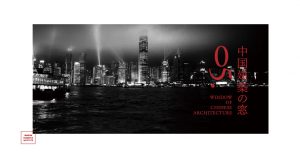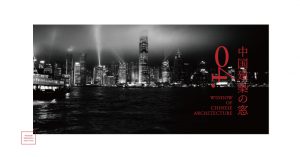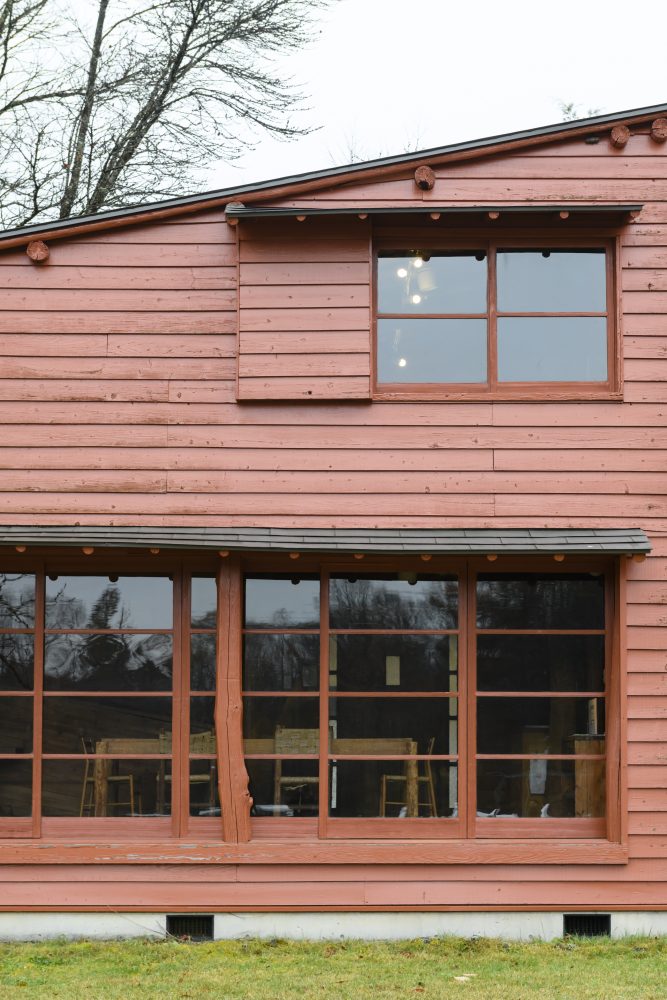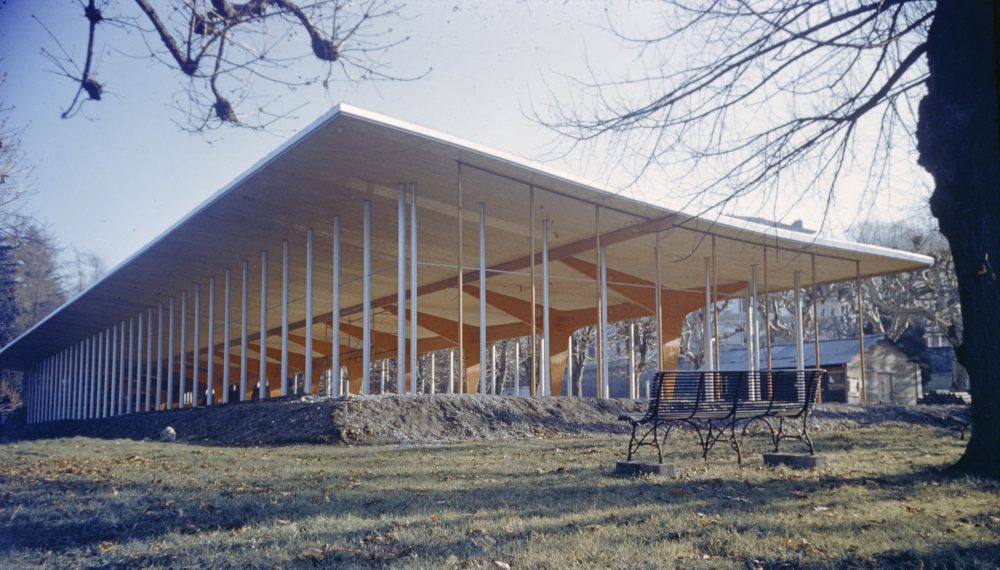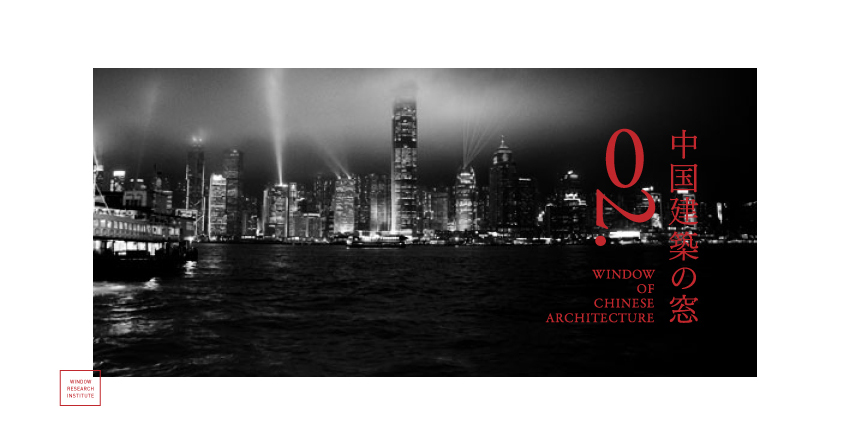
Series Windows in Chinese Architecture
Part 2: The Gathered Gates and Windows
14 Feb 2018
- Keywords
- History
The aperture in Japanese architecture is the “ma,” or “space between objects.” The aperture in western architecture is the “hole.” What is it in Chinese architecture, then? This is a study on the as of yet unknown culture of windows in Chinese architecture from classical times to the present day.
I went to Guanfu Museum, located in the suburbs of Beijing.
Guanfu Museum was opened in 1996 as the first privately run museum in China. Ma Weidu, a famous collector of ancient Chinese art, is the founder. He is a person of culture who teaches people about what he has learned in his personal studies in clear, easy to understand language. Many of the pieces he has collected throughout the years are divided into sections like “furniture,” and “ceramics,” and put on display at Guanfu Museum. I heard that among these categories there was one for Chinese gates and windows, and went to see them in person. By the way, I did not learn until later, but he has written a piece entitled “Ancient Chinese Gates and Windows,” as well. Among the books written on the subject of Chinese Architecture, those that focus their explanations specifically on the fittings of apertures like this are rare. It seems Mr. Ma is deeply fascinated by Chinese architectural fittings.
The items that are on display at the museum are gates and windows that were used in residences in Zhejiang. Ma Weidu bought the pieces when the residences were being removed due to the rapid development of the 1980’s and 1990’s. They were built around the end of the Qing dynasty and the birth of the Republic of China (the end of the 19th century and beginning of the 20th century), and are not particularly old. There are not many examples of pieces that are older than those on display in the museum since they are wooden architectural fittings that are used regularly in everyday life. Though they are not colored, they are elaborately constructed, and the closer I got, being an amateur, I was more and more impressed with their design (magnifying glasses are there for you to use), but when I talked to the curator I was told they could be bought really cheaply in their time.
-

Guanfu Museum
-

Gates and Windows on Display
It is a fascinating thing indeed for windows and gates, pieces that are but a part of a larger architectural structure, to be gathered up by a collector and placed on display like this.
But then, contrary to what one might expect, one could say that such an act brings forth the true essence of windows and gates in wooden Chinese architecture. In Chinese architecture, windows and gates take on the role of providing a view, providing ventilation, and letting in light, at the same time as they are themselves decorations. In my previous article, when I wrote about the windows of wooden structures in Jiangnan gardens, there were lattices painstakingly shaped into the likenesses of petals, grass, or trees. They framed the view of the garden just as they seemed to be made as decorations through which the plants in the garden were transplanted directly onto the structure. In other words the windows themselves were made to be looked at. With the idea that a carefully crafted fitting can be viewed as a decoration, one understands that gates and windows can have value as a piece of art, as well as that this is possible because, being a part of a wooden structure, they can be removed from the structure itself.
In fact, one understands that windows and gates were extremely decorative objects within Chinese architecture when one views the pieces on display at the museum. Like Jiangnan garden “leaking windows” and “flower top windows,” there are typical Chinese geometric patterns like ice crystals and manji signs as well as detailed designs with long, winding, uninterrupted lines being replicated through the wooden lattice of the pieces on display. There are also many patterns in which images reminiscent of plants and animals meld together into one unit. It is well known that in stark contrast to the simplicity of Japanese architecture, there is an element of gaudiness to Chinese architecture, and it can be said that the characteristic is very well represented in their windows and gates.
What is yet more interesting is the fact that stories passed down by the common people like “sort of useful stories” and stories that Japanese people know like “The Romance of the Three Kingdoms” and “Water Margin” are motifs of some carvings. A scene is carved into each door, and by lining up the doors the story unfolds. Though there is a difference in the presence of religiosity in the stained glass of Middle Age European cathedrals, they are quite similar.
Chinese windows and doors are decorations, and they are also a medium through which stories are told.
The gates that drew my eye the most of those on display were a type called “panelled gates.” To put it simply, they are architectural fittings, the top of which are wooden lattice, the bottom of which are made of wooden boards, that make up the aperture of a structure by being placed between pillars in groups of 6, 8, or 12. In Chinese wooden architecture apertures are generally hinged doors. Though of course they serve to allow the passage of people as well as air through them when they are open, they also let in light and allow one to enjoy a view of the outside when they are closed, and while ensuring that functionality, the lattice is intricately crafted in order to make the aperture itself into a decoration for the building, with a different scene of a story carved into each door. The façade of structures at the time, with doors like these lined up next to each other, was surely lively.
-
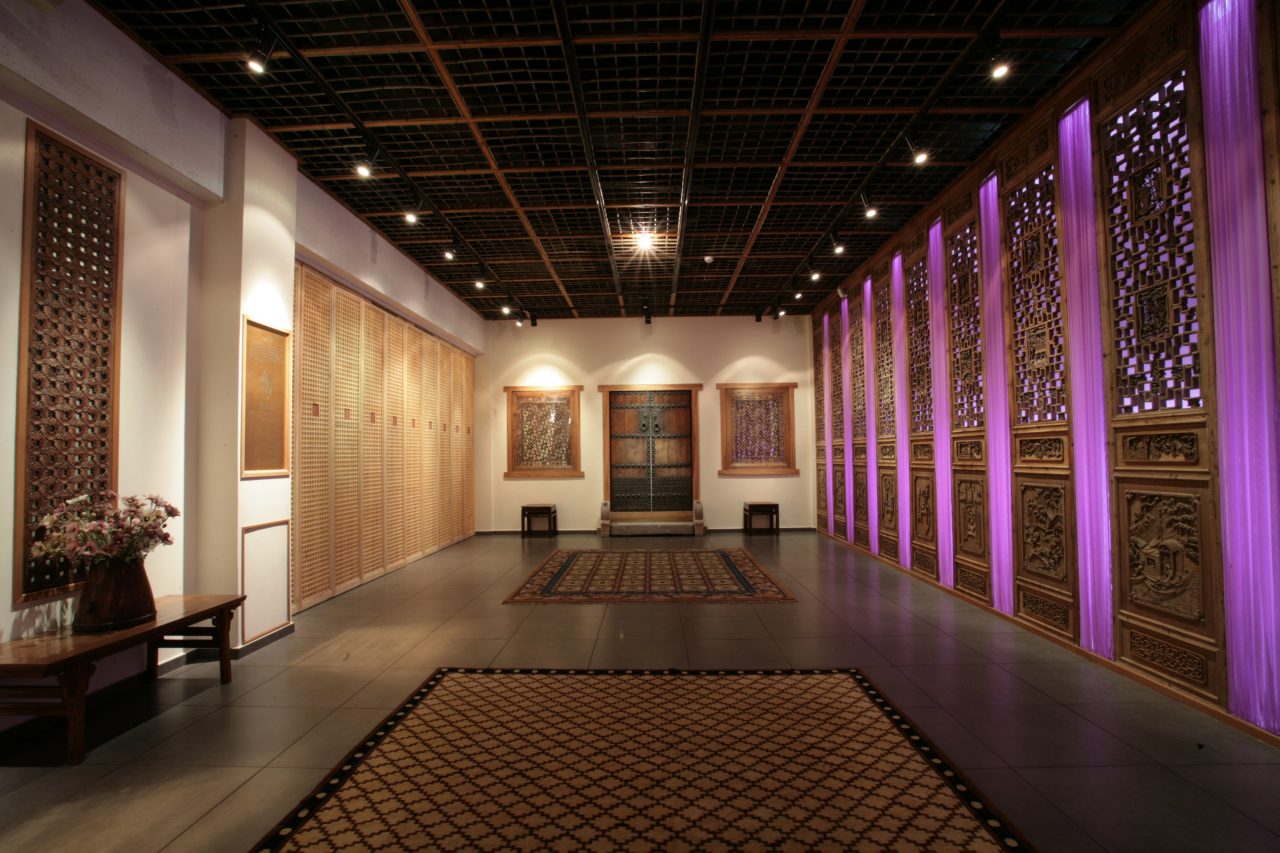
Gates and Windows on Display
-
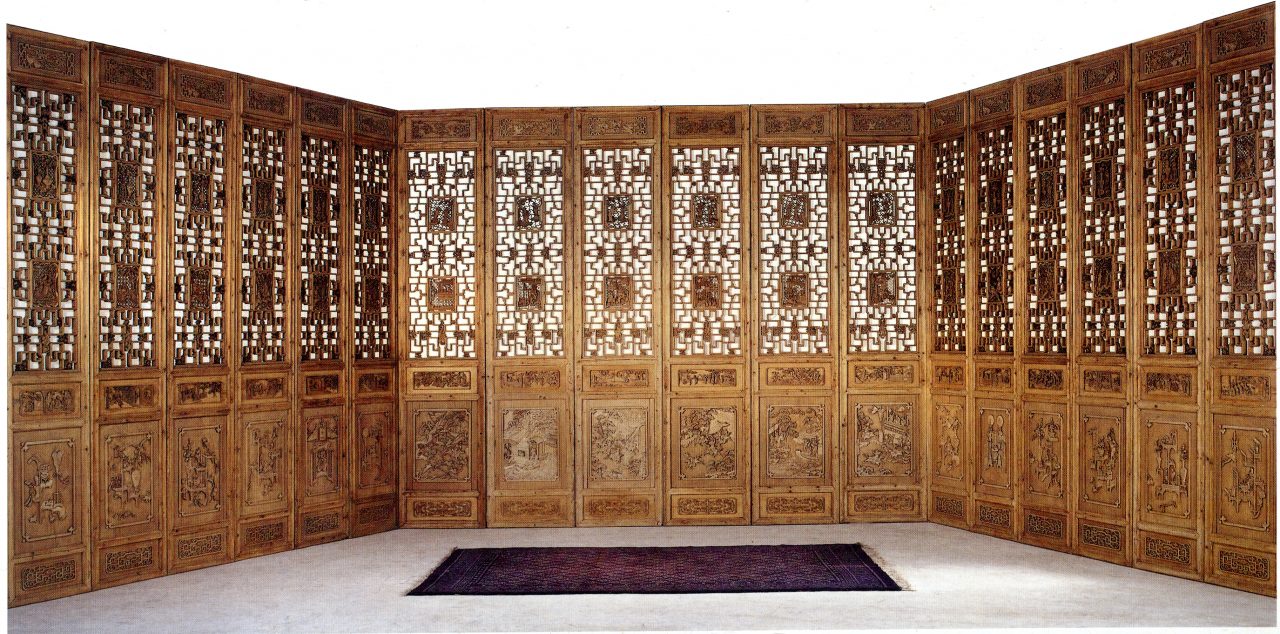
Panelled Gates
When was this style of panelled gate born, I wonder? The name “panelled gate” comes from the Ming and Qing dynasties, but one can track the birth of the style in which wooden lattice is paired with wooden boards to the middle of the 9th century and beginning of the 10th century. After that they were called “lattice gates” until the 12th century (the Song dynasty), when they were split into two types, one called “single shaft panel,” where the top was lattice and the bottom was a simple wooden board, and another called “paired shaft panel,” where a section in the middle was prepared for carving. After that they were called “lattice gates” until the 12th century (the Song dynasty), when they were split into two types, one called “single shaft panel,” where the top was lattice and the bottom was a simple wooden board, and another called “paired shaft panel,” where a section in the middle was prepared for carving.
The panelled gates on display at Guanfu Museum had lattice and boards added to the top and bottom edges, so one can say they are a more complex, evolved version of the “paired shaft panel” structure. With this change in form, generally speaking the panelled gates of the Ming and Qing dynasties took on taller proportions compared to the older “rank gates.” In other words, it became possible to fit more doors in one surface of a piece of architecture than with the older style. With the passage of time what was once a simple standing lattice pattern became more complex and more variant, resulting in subtly different decorations being applied to thinner and taller doors that lined up to form a lively design for the façade of buildings in the Ming and Qing dynasties. However, while we see a wide range of designs that take advantage of these characteristics in the Jiangnan region and regions further south such as the Yunnan province and the Guangdong province where the literati and merchant cultures flourished, in the palaces of the northern regions, most well-known of which is The Forbidden City, we see a uniform design for windows and gates, which reflects the feudalistic world it was under the reign of the emperor.
Kouji Ichikawa
Born in Tokyo in 1985. Currently he is in a doctorate program in Tohoku University’s Engineering Research Department. His research topic is the theory and history of pre-modern and modern Chinese architecture. He is the editor in chief of the amateur architecture magazine “Nemoha.”
